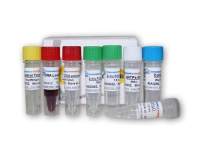The availability of microarray technology for zebrafish research has enabled the expression of tens of thousands of genes to be studied simultaneously in one experiment. The experiment usually involves measuring and comparing the relative abundance of tens of thousands of mRNA species in experimental samples obtained from mutant versus wild-type embryos, disease versus normal tissues, embryos/fish of different developmental stages, physiologic states, or from multiple treatments and/or time-points. A microarray experiment comprised of several stages can be divided into two distinct parts (i.e., the “wet-lab” and the “dry-lab”). The success of a microarray experiment hinges on the “wet-lab” procedures, which include technology that allows for generation of arrays with very high-density DNA where tens of thousands of genes are represented in an area smaller than a standard glass microscope slide, and procedures that enable extraction of high-quality RNA, efficient fluorescent labeling of nucleic acids, as well as specific hybridization of fluorescent labeled-samples with arrayed probes. This chapter describes these “wet-lab” procedures. “Dry-lab” procedures are described in the next chapter.






